Looking for the best possible duck breed for eggs? Here’s a list of the ten duck breeds that lay the most eggs per year, along with a quick overview of their characteristics—what they look like, what color eggs they lay, how large they are, whether they go broody, how popular they are, my recommendations, and what makes each breed most appealing.
| Breed | Eggs Per Year |
|---|---|
| Khaki Campbell | 250-340 |
| Welsh Harlequin | 150-330 |
| Indian Runner | 150-300 |
| Magpie | 220-290 |
| Ancona | 210-280 |
| Silver Appleyard | 200-270 |
| Pekin | 125-300 |
| Saxony | 190-240 |
| Abacot Ranger | 180-200 |
| Buff Orpington | 150-220 |
#1. Khaki Campbell
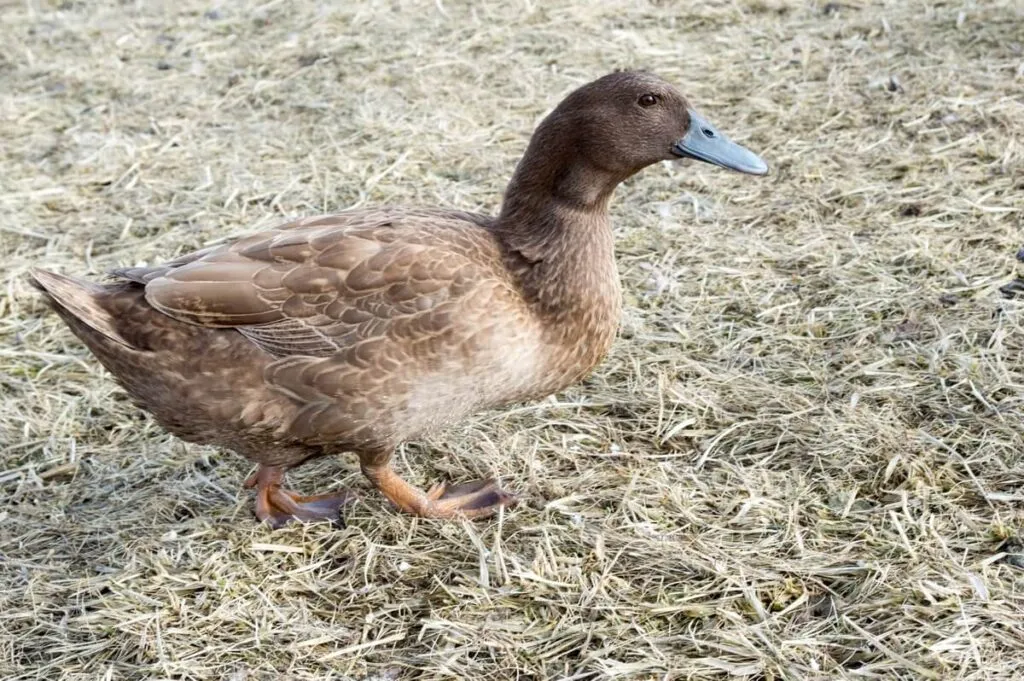
Photo credit: “Khaki Campbell Duck” (CC BY-NC-ND 2.0) by Tina Bell Vance
The Khaki Campbell is the best duck breed to raise for eggs. On average, they lay more than any other duck breed: 250-340 eggs per year.
Not every individual is spectacular, however, so if you want high-producing ducks, I recommend doing your research and finding a good breeder.
Khaki Campbells lay white eggs, sometimes with a creamy or greenish tint.
They are quite small: 3.5-5 pounds (1.5-2.2 kg).
They rarely go broody, but those that do decide to sit are usually decent mothers.
They are labeled as “Watch” by The Livestock Conservancy.
If you want the most productive layer around, Khaki Campbell ducks might be the right breed for you.
Read more about Khaki Campbell ducks here: https:
#2. Welsh Harlequin
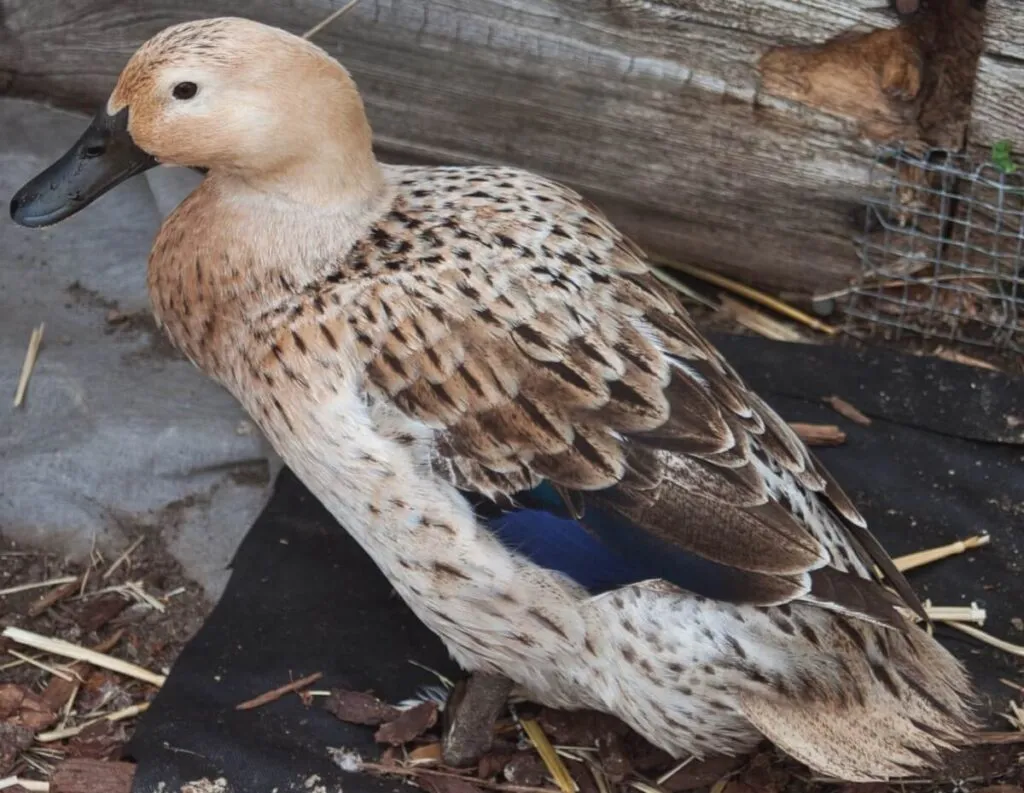
Photo credit: “Here’s Mama! She’s a layer too!” (CC BY-NC 2.0) by Steve Wedgwood
Welsh Harlequin ducks can also be extremely productive layers. They can produce 150-330 eggs per year.
They lay large white eggs.
They’re a little larger than Khaki Campbells, but still a lightweight breed, weighing 4.5-5.5 pounds (2-2.5 kg).
They are fairly good broodies and mothers.
Welsh Harlequin ducks are less common than Khaki Campbells, but are also labeled as “Watch” by The Livestock Conservancy.
They are also known for being extremely docile and calm. In fact, the man who created the breed, Leslie Bonnet, said that they often outperformed Khaki Campbells because they were less likely to drop egg production in response to stress.
If you want an extremely productive layer but want something a little more unusual than the Khaki Campbell, or if you want a breed that can also hatch its own ducklings, Welsh Harlequin ducks might be the right breed for you.
Read more about Welsh Harlequin ducks here: https:
#3. Indian Runner
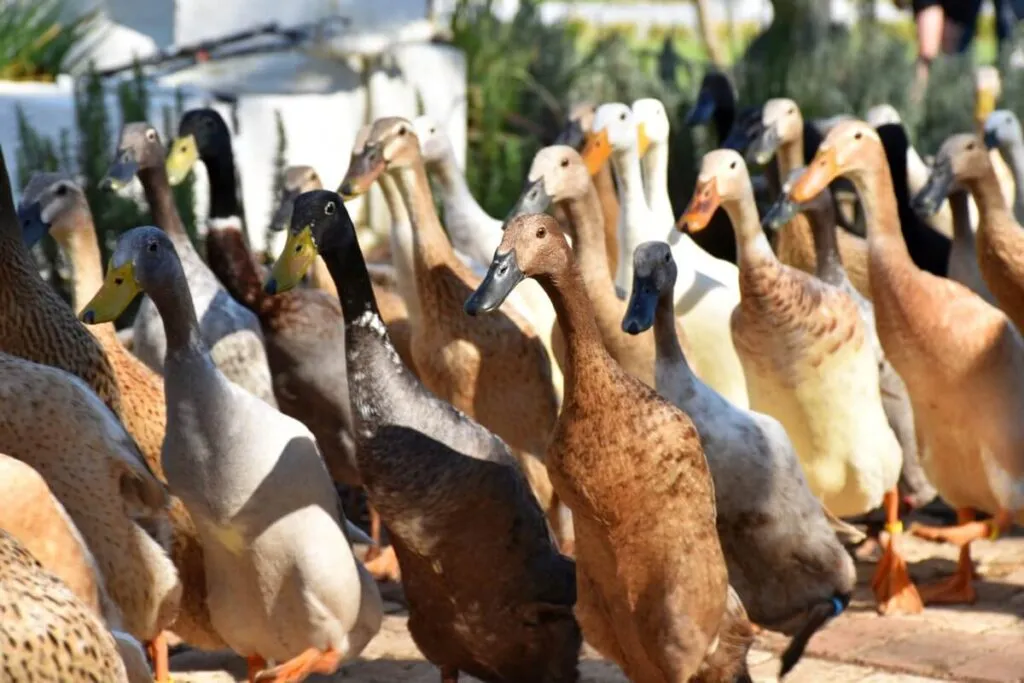
Indian Runner ducks come in at #3 on this list, but they’re still fantastic layers, producing 150-300 eggs a year. Some sources claim they can lay up to 350 eggs a year, but the average Indian Runner does not even approach this number. Average birds probably lay around 200 eggs a year, but well-bred individuals lay more.
Runner ducks most commonly lay white eggs, but many individuals lay green or blue eggs. Some even lay grayish-black eggs.
They weigh 3-5 lb (1.4-2.2 kg).
They do not usually go broody.
Indian Runner ducks are one of the most popular duck breeds.
They’re best known for their upright conformation, which resembles a bowling pin on legs. They also come in more colors than any other duck breed. The standardized colors are White, Black, Chocolate, Cumberland Blue, Fawn, Fawn & White, Blue Dusky, Apricot Dusky, Mallard, Silver, Trout, Blue Trout, and Apricot Trout. They are also extremely active and good foragers.
If you like the shape of the Runner duck, want a colorful duck that lays colorful eggs, or want a duck that can forage well, Indian Runner ducks might be the best breed for you.
Read more about Indian Runner ducks here: https:
#4. Magpie

Photo credit: “Chewy Pie” (CC BY-NC-ND 2.0) by tifotter
Magpie ducks are underrated, I say. They are one of the best duck breeds for eggs, producing 220-290 eggs a year, yet I hardly know of anyone keeping them.
Their eggs can be white, green, or blue.
They weigh 4-6 pounds. Even though they aren’t particularly large, their build is not as slight as many other layer breeds, so they make for good dual-purpose ducks.
Magpie ducks occasionally go broody, but they’re not prone to it.
They are very rare. They’re listed as “Threatened” by The Livestock Conservancy.
If you want a dual-purpose breed, want to help conserve a rare breed, or like the looks of the Magpie duck, they might be the right breed for you.
Read more about Magpie ducks here: https://www.raising-ducks.com/magpie-duck/
#5. Ancona
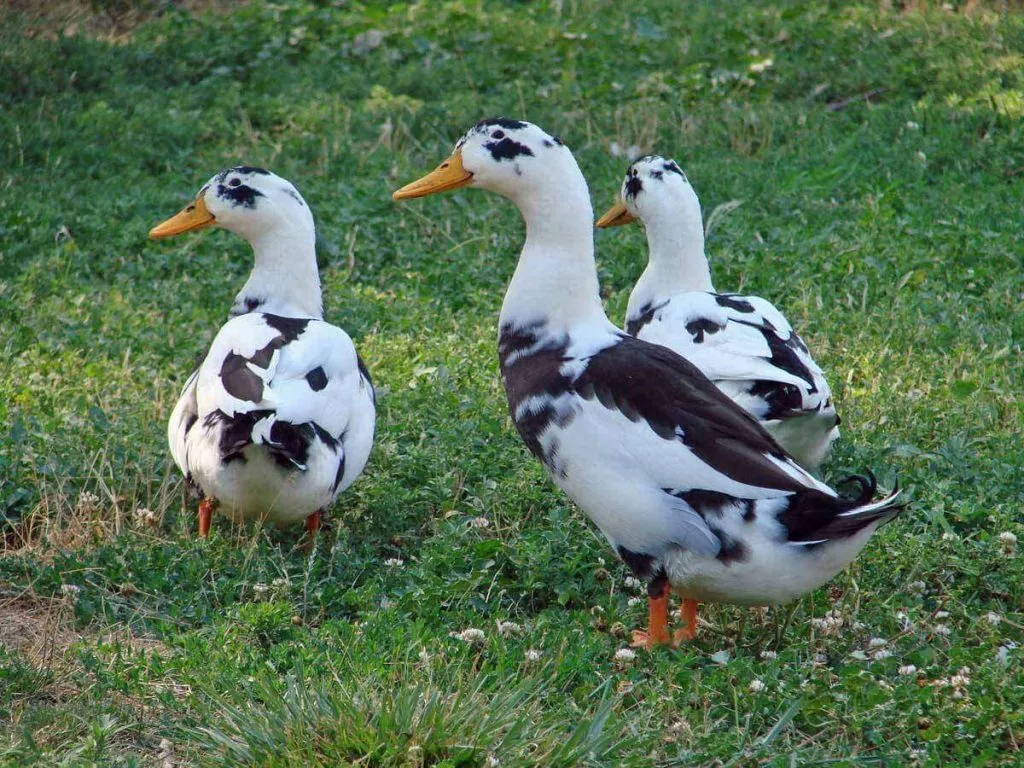
Photo credit: “DucksGrownUp” (CC BY-SA 2.0) by Miles Away Farm
The Ancona is similar to the Magpie, just with slightly wilder, quirkier plumage. They lay 210-280 eggs a year.
They usually lay white, cream, blue, green, or gray eggs.
They’re a little larger and stockier than the Magpie, weighing 6-6.5 pounds. They’re a good dual-purpose breed.
Ancona ducks occasionally go broody.
They nearly reached extinction a couple decades ago and were labeled as “Critical” by The Livestock Conservancy until 2015, when they were relabeled as “Watch.” They are still rare, but their numbers are rising.
If you want an even better dual-purpose duck than the Magpie, want colorful eggs, or want a rare, uniquely-colored bird, the Ancona duck might be the right bird for you.
Read more about Ancona ducks here: https:
#6. Silver Appleyard
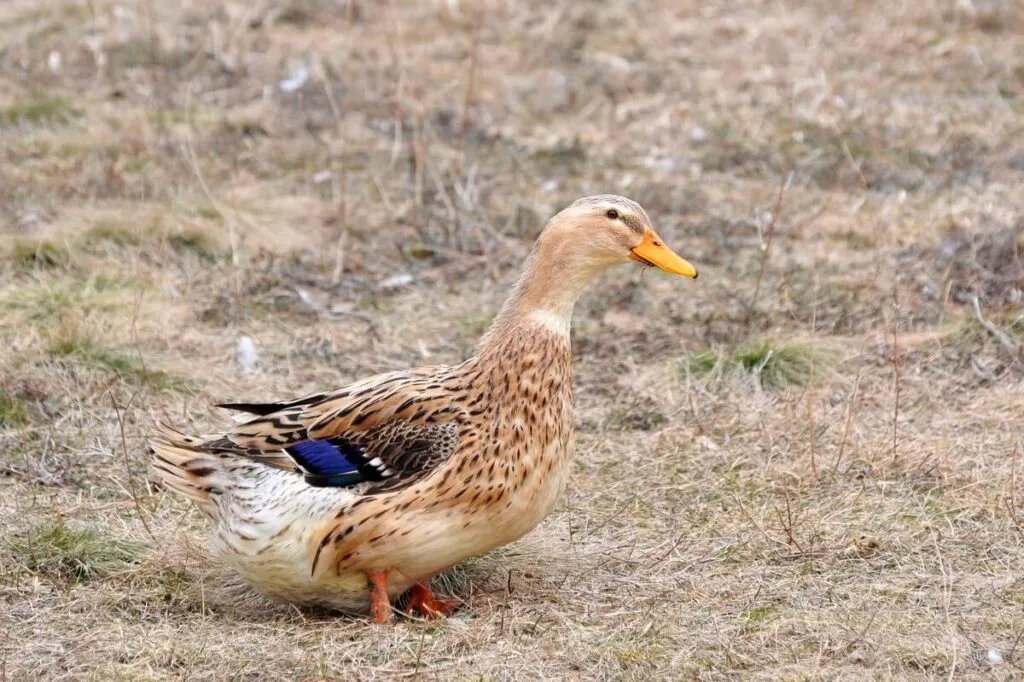
Silver Appleyard ducks lay 200-270 eggs a year.
Their eggs are white.
They are one of the few heavy breed ducks that excels at egglaying, as they weigh 7-9 pounds. For those looking for a good layer that will also double as a meat bird, the Silver Appleyard may the best choice. They may not outperform the very best Pekins, but they are certainly more interesting and a heritage breed worth preserving.
In my opinion, the Silver Appleyard is the best sustainable, do-it-all heritage breed for a homesteader or small farmer.
They are also good broodies and mothers—another advantage they have over the Pekin.
They are listed as “Threatened” by The Livestock Conservancy.
If you want the best possible dual-purpose duck but don’t want the Pekin, the Silver Appleyard may be the breed for you.
Read more about Silver Appleyard ducks here: https:
#7. Pekin
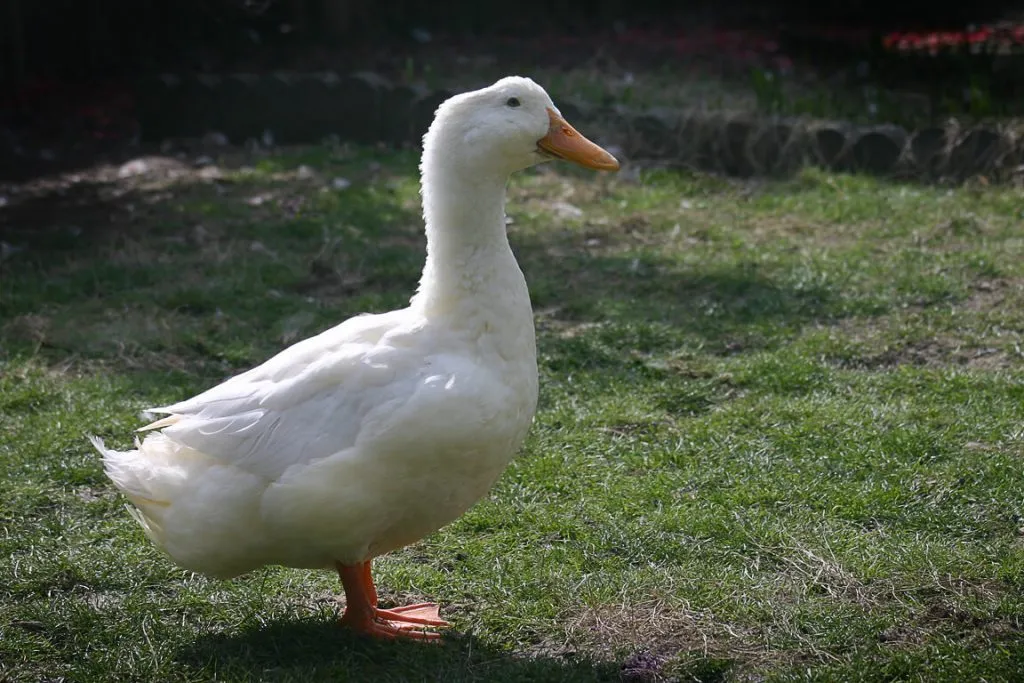
Photo credit: “My boy Flapper” (CC BY-NC-ND 2.0) by tifotter
Pekins are typically considered meat ducks, not layers. It’s true that many individuals are only mediocre layers, and the average Pekin probably lays around 200 eggs a year, but some strains of Pekin are excellent layers. A Pekin may lay anywhere from 125 to 300 eggs a year.
Cherry Valley Pekins are particularly good layers, producing 200-300 eggs a year.
Read more about how much various strains of Pekin lay here.
Pekins lay extremely large white eggs.
They weigh 8-13.5 lb (3.6-6.1 kg), so they are the largest breed on this list. The largest Pekin strains are usually not the best layers, however.
They are usually terrible broodies. Few individuals will decide to sit, and those that do are often unreliable mothers.
Pekins are extremely common and easy to find, but finding a productive layer may be more difficult.
Pekins are also the best duck breed for meat by a mile. Their size and food conversion rate is unparalleled.
If you want the best dual-purpose duck possible, Pekins may be the breed for you.
Read more about Pekin ducks here: https:
#8. Saxony
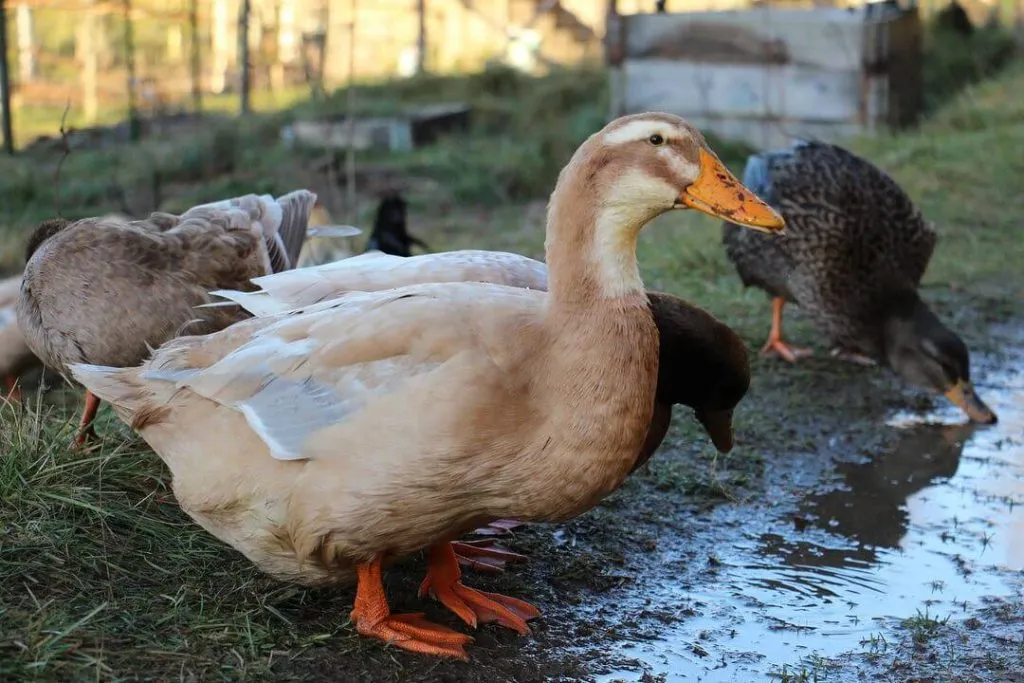
Photo used with permission from “ssbobon” on Instagram.
Saxony ducks lay 190-240 eggs per year.
Their eggs are white.
Like the Silver Appleyard, they are a heavy breed, weighing 7-9 pounds, so they make excellent dual-purpose ducks.
Saxony ducks are often good broodies and mothers.
They are listed as “Threatened” by The Livestock Conservancy.
Their coloring is termed “apricot trout,” and they are the only duck breed to call this stunning color and pattern their own. (Some Runner and Call ducks can have this coloring as well, but it’s rare.)
If you like the Silver Appleyard but like the Saxony’s unique color better, they may be the right breed for you.
Read more about Saxony ducks here: https:
#9. Abacot Ranger
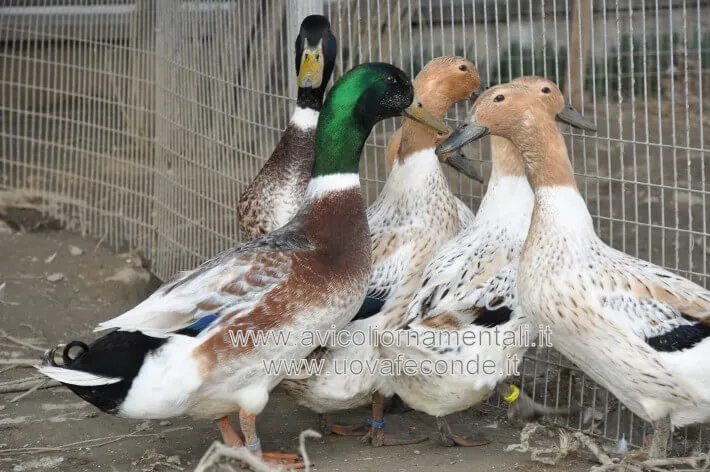
Photo used with permission from avicoliornamentali.it.
Abacot Ranger ducks lay 180-200 eggs a year. A century ago, they were the best laying ducks in the Wye College Duck Laying Test, but modern individuals seem to have lost a little of their productivity.
Their eggs are white.
They weigh 5.5-6.6 lb. They are considered dual-purpose ducks, but they’re not as good for meat as the Pekin, Silver Appleyard, or Saxony.
Some Abacot Rangers are good broodies and mothers; others aren’t.
They are extremely rare. To my knowledge, they don’t even exist in the United States yet. Neither are they listed by The Livestock Conservancy. They are, however, on RBST (Rare Breeds Survival Trust) watchlist. They’re most popular in Germany.
If you want an extremely rare, beautiful duck breed, Abacot Rangers might be the right breed for you.
Read more about Abacot Ranger ducks here: https:
#10. Buff Orpington
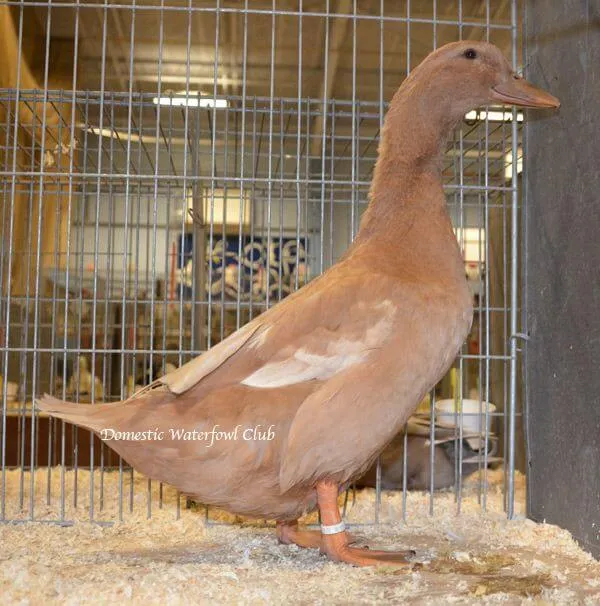
Photo used with permission from The Domestic Waterfowl Club of Great Britain.
Buff Orpingtons are last on this list, but they still lay a handsome sum of 150-220 eggs per year.
They lay white eggs.
They are another good dual-purpose breed, weighing 5-8 lb. They are also very fast-growing.
Buff Orpingtons sometimes go broody. Some individuals do and others don’t.
They are quite rare and are listed as “Threatened” by The Livestock Conservancy.
If you like buff and you want a solid dual-purpose duck, Buff Orpingtons might be the right breed for you.
Read more about Buff Orpington ducks here: https:
Leave a comment
Your email address will not be published.